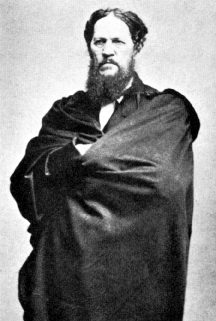|
Afghanistan–Iran Relations
between Afghanistan and Iran were established in 1935 during King Zahir Shah's reign and the Shah of Iran Reza Shah Pahlavi, though ties between the two countries have existed for millennia. As a result, many Afghans speak Persian, as Dari (an eastern dialect of Persian) is one of the official languages of Afghanistan, and many in Afghanistan also celebrate Nowruz, the Persian New Year. Relations were negatively affected by the 1979 Iranian Revolution and issues related to the 1978–present Afghan conflicts (i.e. Mujahideen, Afghan refugees, and the Taliban), as well as Iran's water dispute and the growing influence of the United States in the Islamic Republic of Afghanistan. In July 2019, the Iranian government passed a law that provides Afghan nationals with a new chance to get Iranian residency. Afghans with specific scientific and professional achievements and those who have Iranian spouses and children are among those who are qualified to benefit from the law. Histori ... [...More Info...] [...Related Items...] OR: [Wikipedia] [Google] [Baidu] |
Afghan Embassy, Tehran
Afghan may refer to: *Something of or related to Afghanistan, a country in Southern-Central Asia *Afghans, people or citizens of Afghanistan, typically of any ethnicity **Afghan (ethnonym), the historic term applied strictly to people of the Pashtun ethnicity **Ethnic groups in Afghanistan, people of various ethnicities that are nationally Afghan *Afghan Hound, a dog breed originating in the mountainous regions of Afghanistan and the surrounding regions of Central Asia *Afghan (blanket) *Afghan coat *Afghan cuisine People * Sediq Afghan (born 1958), Afghan philosopher * Asghar Afghan (born 1987), former Afghan cricketer * Afgansyah Reza (born 1989), Indonesian musician also known as "Afgan" * Afghan Muhammad (died 1648), Afghan khan in modern day Russia * Azad Khan Afghan (died 1781), Afghan Commander and Ruler Places * Afghan, Iran, a village in Sistan and Baluchestan Province, Iran Other uses * Afghan (Australia), camel drivers from Afghanistan and Pakistan who came to the Au ... [...More Info...] [...Related Items...] OR: [Wikipedia] [Google] [Baidu] |
Afghanistan–United States Relations
Relations between Afghanistan and the United States began in 1921 under the leaderships of Amanullah Khan and Warren G. Harding, respectively. The first contact between the two nations occurred further back in the 1830s when the first recorded person from the United States explored Afghanistan. The United States government foreign aid program provided about $500 million in aid for economic development; the aid ended before the 1978 Saur Revolution. The Soviet invasion starting in December 1979 was a turning point in the Cold War, when the United States started to financially support the Afghan resistance. The country, under both the Carter and Reagan administrations committed $3 billion dollars in financial and diplomatic support to the anti-Soviet Mujahideen forces. Beginning in 1980, the United States began admitting thousands of Afghan refugees for resettlement, and provided money and weapons to the Mujahideen through Pakistan's Inter-Services Intelligence (ISI). The USSR ... [...More Info...] [...Related Items...] OR: [Wikipedia] [Google] [Baidu] |
Old Kandahar
Old Kandahar (locally known as Zorr Shaar; ps, زوړ ښار, , Old City, also Shahr-i-Kona in Dari) is a historical section of the city of Kandahar in southern Afghanistan. Many believe that there are hidden ancient treasures buried in and around the orange citadel. The citadel It is widely believed that after conquering Mundigak in 330 BC, Alexander the Great marched southeast with Ancient Macedonian army, his army and laid out what is now Old Kandahar and named it Alexandria Arachosia, Alexandria. The site was likely chosen as a way to protect its inhabitant from the occasional heavy sandstorms coming from nearby Reg District, Kandahar, Reg District (Sand District). Others suggest that the foundation (engineering), foundation of the citadel was probably laid out during the Iron Age, and became a major fortress of the Achaemenid Empire. It served as the local seat of power for many rulers in the last 2,000 years. The region became part of many empires, including the Maurya Empir ... [...More Info...] [...Related Items...] OR: [Wikipedia] [Google] [Baidu] |
Shah Ismail I
Ismail I ( fa, اسماعیل, Esmāʿīl, ; July 17, 1487 – May 23, 1524), also known as Shah Ismail (), was the founder of the Safavid dynasty of Safavid Iran, Iran, ruling as its King of Kings (''Shahanshah'') from 1501 to 1524. His reign is often considered the beginning of History of Iran, modern Iranian history, as well as one of the gunpowder empires. The rule of Ismail I is one of the most vital in the history of Iran. Before his accession in 1501, Iran, since its Muslim conquest of Persia, conquest by the Arabs eight-and-a-half centuries earlier, had not existed as a unified country under native Iranian peoples, Iranian rule, but had been controlled by a series of Arab Caliphate, caliphs, Seljuk Empire, Turkic sultans, and Ilkhanate, Mongol Khan (title), khans. Although many Iranian dynasties rose to power amidst this whole period, it was only under the Buyid dynasty, Buyids that a vast part of Iran properly returned to Iranian rule (945–1055). The dynasty foun ... [...More Info...] [...Related Items...] OR: [Wikipedia] [Google] [Baidu] |


